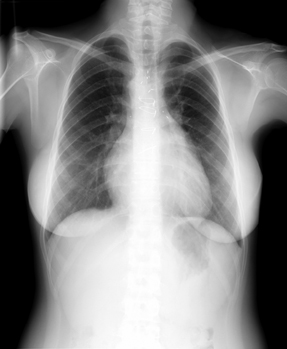Updates to Medicare program change telehealth codes, PQRS
The second of a two-part series outlines changes to telehealth codes for diabetes and the Physician Quality Reporting System.
Last month, we reviewed some of the notable changes for the 2012 Medicare program. The review continues in this column with highlights about telehealth services, diabetic treatment and management services, the Physician Quality Reporting System, and the value-based payment modifier. Much greater detail is available online.
Code changes for telehealth services, diabetes treatment

The Centers for Medicare and Medicaid Services (CMS) finalized its proposal to change the code descriptors for initial inpatient telehealth consultation G-codes to reflect telehealth consultations furnished to emergency department patients, in addition to inpatient telehealth consultations. CMS decided not to finalize the proposal to change the code descriptors for follow-up inpatient telehealth consultations, since the agency does not believe follow-up consultations are furnished to emergency department patients.
CMS will update and increase the relative value units for diabetic treatment and management HCPCS codes G0245- G0247, G0341-G0343, and G0365.
Physician Quality Reporting System
Any group composed of multiple tax identification numbers (TINs) participating in a Medicare-approved demonstration project of other programs will also be deemed to be participating in the PQRS group practice reporting option (GPRO), to ensure that such groups will not be barred from participating in the GPRO under the eRx Incentive Program. The agency previously required participation in the PQRS GPRO. CMS finalized that a group practice must self-nominate to participate under the eRx Incentive Program's GPRO.
The GPRO will test the extraction of electronic health record (EHR) data submitted through the GPRO website interface. Groups interested in participating in this test must state their interest in their self-nomination letter. Groups who have previously been in the PQRS GPRO will automatically qualify for the GPRO in 2012 and in the future.
PQRS reporting periods
The final rule eliminates the 6-month period for claims- and registry-based reporting of individual measures, to help align the PQRS reporting periods with the EHR reporting mechanism. It also retains the claims-based, registry-based and EHR-based reporting mechanisms for 2012 and beyond. CMS will post a list of qualified registries for the 2012 program year.
EHR reporting for PQRS
EHR reporting will be maintained for 2012 and beyond. The following requirements will hold: Clinicians must select a PQRS-qualified EHR product and must submit Medicare clinical quality data extracted from the EHR directly to CMS, in the CMS-specified manner.
CMS notes that physicians and providers may have purchased certified EHR technology for purposes of reporting under the Medicare and Medicaid EHR Incentive Programs. Such certified EHR technology may or may not be qualified for purposes of the 2012 PQRS. Eligible professionals will need to ensure that their certified EHR technology is also qualified for purposes of the 2012 PQRS to participate in the PQRS via the EHR-based reporting mechanism for 2012.
CMS admits that it is not prepared to accept electronic submission of Clinical Quality Measure (CQM) data in 2012, so it will continue to use attestation for 2012.
In addition, CMS describes a pilot program where participants in the EHR Incentive Program can use the PQRS EHR-based mechanisms to submit their clinical quality measure (CQM) data. Volunteers could submit their data through their approved EHR vendor or through the direct data submission supported for certain approved EHR vendors.
Certification and PQRS
The final rule clarifies the requirement for certification frequency: CMS states that to earn an additional 0.5% incentive for 2012 through 2014, the eligible professional must participate more frequently than is required in at least one of the four parts of the Maintenance of Certification (MOC) program and have “more frequent” participation in the practice assessment component. CMS will leave it to the specific credentialing board's certification requirements to decide whether a professional has completed one of the elements of a program “more frequently.”
For 2012-2014, any professional desiring to earn the 0.5% PQRS MOC incentive payment will be required to meet the reporting requirements for PQRS, via any of the other PQRS reporting mechanisms or via the MOC program if it is qualified as a PQRS registry for 2012. The physician or provider must have his or her data submitted to CMS by his or her qualified medical specialty board or other MOC-sponsoring entity.
Noncompliance penalties
The rule finalizes that for the PQRS, a penalty will occur in 2015 and subsequent years if the physician or provider does not satisfactorily submit quality measure data for covered professional services rendered within the quality reporting period for the year. (This is a delay from the original deadline.)
For 2015, the reporting period will be the 12 months of 2013 (January through December). The adjustment percentages do not change in the proposed rule:
- 2015: 1.5% penalty
- 2016 and beyond: 2% penalty
PQRS measure clusters
For claims-based reporting, if a physician reports fewer than three measures in 2012 and reports on a measure that is part of an identified “cluster” of closely related measures but does not report any other measures in the identified cluster, then the physician will not qualify as a satisfactory reporter in the 2012 PQRS or earn an incentive payment.
ACP viewed this as a vague requirement because CMS has never specifically identified any “clusters of closely related measures.” ACP will continue to urge CMS to identify these clusters before implementing the provision, so as not to leave physicians guessing about the specific requirements for successful participation in the PQRS. More subregulatory guidance about the PQRS measure clusters is online.
Physician Compare website
CMS will publicly report the performance rates of the quality measures of group practice participants in the Physician Group Practice demo, as early as 2013 for data reported in 2012. To eliminate the risk of calculating performance based on small denominators (and then reporting it on the public website), the proposed minimum patient sample threshold will be 25.
CMS will not post the measure performance rates of individual physicians (or other eligible providers) in a group. However, the agency does propose to post the names of the physicians and other eligible providers who were associated with the group practice during the reporting period.
Group practices in the 2012 GPRO will have to specifically agree in their self-nomination form that they want their reporting performance rates posted publicly. CMS will modify the GPRO data collection tool for 2012 to calculate the numerator and denominator and measure the performance rate for each measure from the data that the group practices use to populate the tool and provide each group with this information at the time of tool submission.
Improving physician feedback
In 2012, CMS will begin to include the PQRS measures in the physician feedback reports, as part of the value-based payment effort. CMS expects the expanded reports to identify “clear and consistent opportunities for improvement,” with demonstrative data on how physicians' performance compares to their peers on the same quality measures. Additionally, the agency will align the PQRS quality measures with the e-prescribing incentive program quality measures.
The 35 large groups that participated in the 2010 GPRO-1 will receive physician feedback reports. The groups will be compared to each other on the 26 quality measures that were included in the GPRO-1 reporting tool. The reports will contain 2010 Medicare A and B paid claims summary information on patients attributed to the group practice. The reports will also show the average rate of preventable hospital admissions for these ambulatory care-sensitive conditions:
- diabetes,
- bacterial pneumonia,
- dehydration,
- chronic obstructive pulmonary disease,
- urinary tract infection and
- congestive heart failure.
Future refinements to the physician feedback reports include:
- alternate methods of patient attribution, to more accurately assess the quality of care furnished and the associated resources,
- separation of data by physician specialty and by conditions treated, which should give results that are more reflective of practice patterns and
- examination of whether CMS can provide reports to groups of physicians who submit Medicare claims under a single TIN, which would allow the agency to provide feedback reports that cover more physicians.
Value-based payment modifier
CMS will eventually implement a budget-neutral, nongeographically determined value-based payment modifier, as required by statute. The modifier is designed to “establish a payment modifier that provides for differential payment to a physician or a group of physicians” under the physician fee schedule “based upon the quality of care furnished compared to cost ... during a performance period.”
This means that the Health and Human Services Secretary would establish a differential payment under the physician fee schedule to reflect value, in this case, the ratio of quality of care to cost, and that the value modifier should be independent from the geographic adjustments applied under the fee schedule.
Although the rulemaking regarding the modifier will not appear until summer 2012, we know that CMS is required to apply the modifier by Jan. 1, 2015 to specific groups of physicians, as deemed appropriate by the Secretary. The modifier must be applied to all physicians by Jan. 1, 2017. ACP will provide full details when they become available.
The ACP summary of the 2012 Medicare Physician Fee Schedule changes is online.




